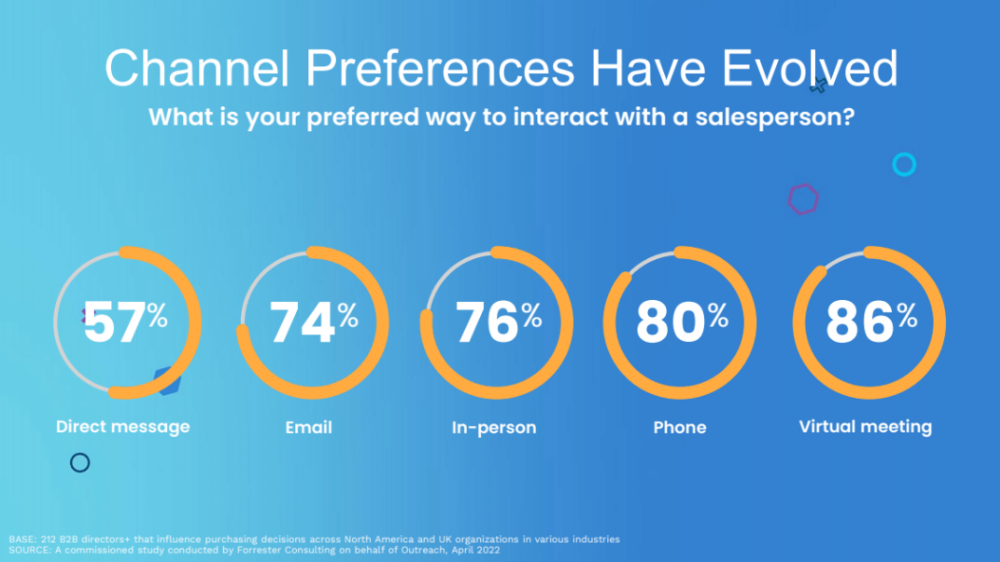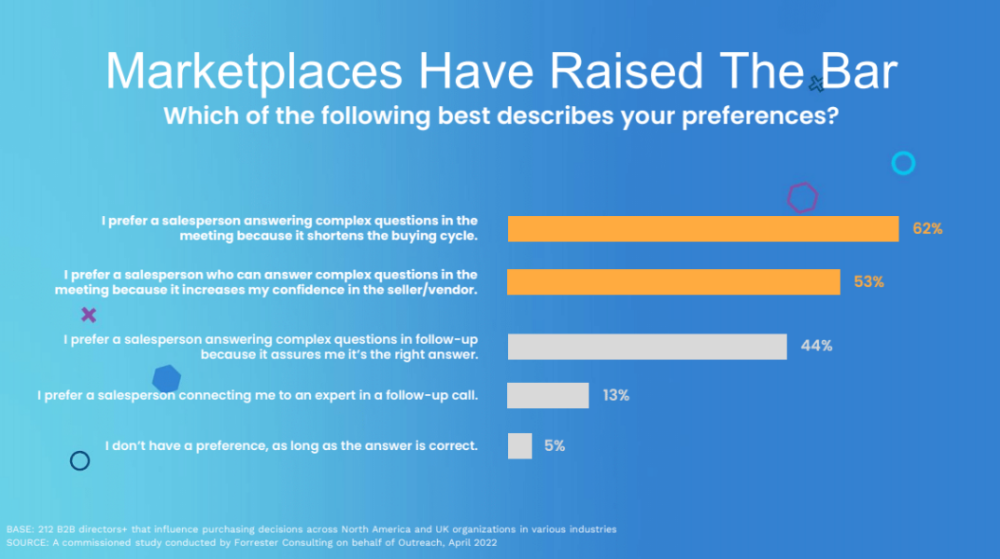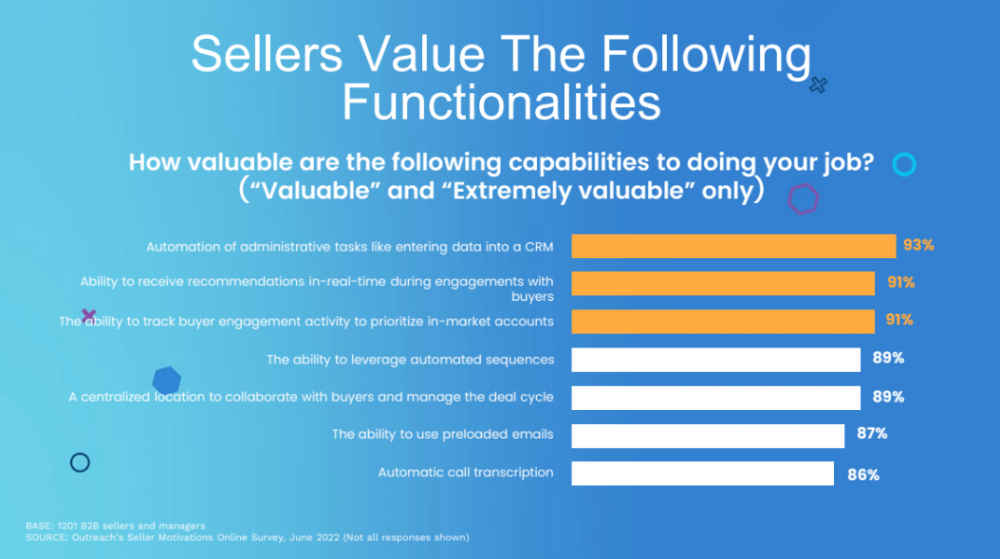The marketplace in 2023 prioritizes emerging technology and instantaneous communication. B2B founders and sales agents feel pressured to keep up with the rapidly evolving market. It can be both costly and exhausting to stay privy to the latest trends and able to predict the next big thing. SaaS companies must implement flexible and innovative sales strategies that can weather the future.
Mary Shea, Global Innovation Evangelist at Outreach, shares her vision for the future of B2B sales and provides actionable advice for leaders to thrive in today’s dynamic marketplace. You can see all of Mary’s slides for this session HERE.
The state of B2B sales in 2023
Before creating a dynamic strategy, it is essential to understand the current state of B2B sales. Three macro trends summarize the recent shifts in B2B sales:
- Millennial generational shift.
- Digitalization of the buying and selling process.
- Technological AI and automation advancements.
Sales cycles have become complex, with more stakeholders participating in the buying process—often called buying groups. These stakeholders have different competing agendas and look for more omnichannel interactions. As a result, the number of interactions needed to close out sales has increased by 75%.
Buyers now favor virtual channels as their optimal communication method with a salesperson. In addition, C2B marketplaces have raised buyers’ expectations regarding interactions with a sales team. If sales agents fail to provide relevant answers instantly, the trust between sellers and buyers decreases.
To thrive in the present market, companies must figure out how to close their sales execution gap. B2B entities can narrow the gap between their revenue and what they could deliver by fixing talent and technology inefficiencies.
“Sales organizations are becoming more agile, adept, and technology-enabled. The status quo approach of going to market and old-school selling methods will not be sufficient.”

What B2B sellers are looking for
An outstanding salesperson can shift a company’s revenue. It is no wonder that companies are on the lookout for these talents. Here are four primary values that the best sellers are looking for:
Top-tier sales technology. When asked about an employer’s sales tech stack and how it influences one’s likelihood of accepting a job offer, 92% of respondents stated that it was extremely important.
QOL functionalities. Talent acquisition managers can attract top salespeople by introducing QOL functionalities. Automating tasks like data entry and providing tools that track buyer activity is simple and effective.
Being virtuous. Leaders should focus on transparency, appreciation, and flexibility to create a positive workspace for sales talent.
Social responsibility. Diverse and inclusive companies that fulfill social responsibilities, be they environmental or societal, resonate well with corporate workers.
“We’re starting to see more of a blending between work and personal life and values playing a role in influencing business decisions.”
Attributes of stakeholders
As the market has changed, the qualities that once led to higher revenue have become outdated. Key contributors in the sales cycles must adapt to this evolution—starting with sellers, who must now prioritize a digital-first approach with clients.
Not only does this embrace hybrid methodologies, but it also builds long-term relationships with buyers. Furthermore, sellers must adopt a data-driven mindset to become predictable producers. That isn’t to say that all the responsibilities lie with the sellers. Managers of sales teams must also adapt to the dynamic market state. The managers of the future leverage technology, ingest data to inform actions, and effectuate positive changes in their teams.
The figurehead of the sales team must have strong leadership capabilities to hire and retain a high-performing and diverse team effectively.
The evolution and future of sales
The time required to influence buying decisions continues to grow shorter and shorter. Consequently, sellers are grasping for new methods to close out deals.
Up until 2015, CRM ruled king in sales. But a new competitor known as point solution would emerge to usurp CRM from its primary position. This sales technology utilized automation and insight, which investors valued.
Once single-point solutions took over sales technology in 2021, buyers grew tired of managing different seller relationships. Consequently, providers accommodated this exhaustion by creating multi-product platforms. As a result, sales execution platforms became more proficient and accessible by 2022.
Improvements included sales activity executions on a single platform, delivering revenue with fewer resources. Suffice it to say every member of the sales cycle benefitted from this advancement.
The future of sales technology will likely merge marketing and selling talent, including CRO and CMO, to acquire and evolve customers. However, to compensate for this merging, the average selling organization will become smaller as it delivers predictable results.
“Sales execution platforms like Outreach sit at the top of the CRM system, supporting everyone in the revenue organization with functionalities and tools that aid their workflow.”
Strategies to implement today
Here are strategies that can be implemented now to prepare leaders and sellers for the upcoming era of B2B sales.
- Tune your GTM approach to relate to how modern buyers want to buy.
- Understand the magnitude of the Sales Execution Gap.
- Redeploy funds from headcount to sales technology.
- Acquire, cultivate, and retain top-tier sales talent.
- Embrace sales technology as a competitive differentiator.



